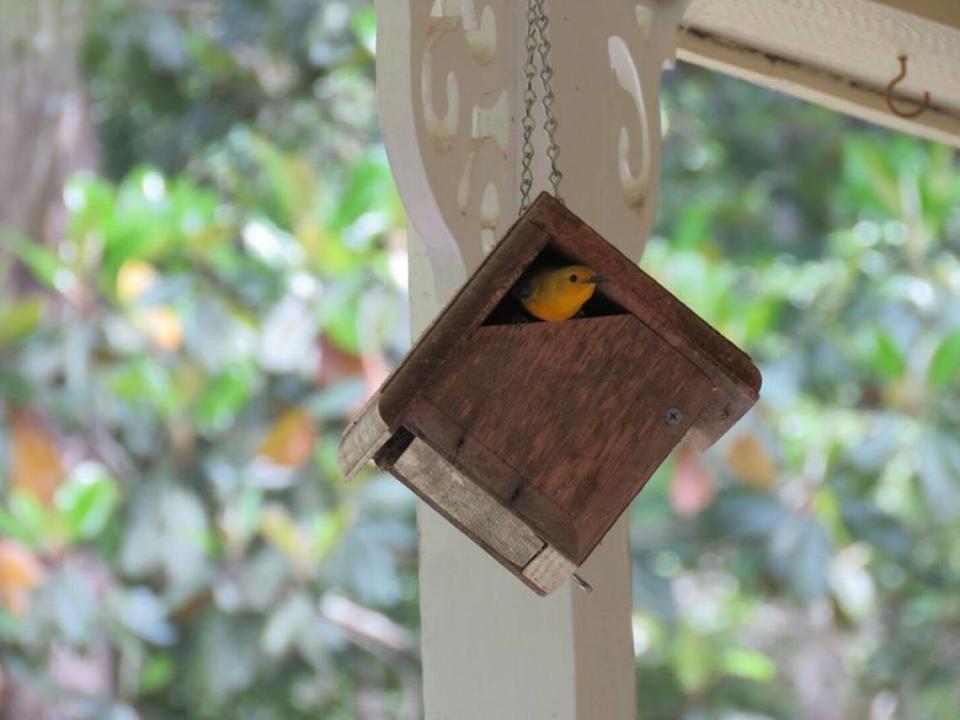Birding in the time of COVID-19: It can be done from an apartment window
Bird-watching often involves high-tech binoculars, detailed field guides, maybe a powerful spotting scope and a tripod. Many bird lovers travel to special spots — parks, beaches, the Everglades — where migrating birds might fly by or where a rare native species sometimes makes an appearance. Birders have the freedom to go find birds wherever they may be.
But during the COVID-19 pandemic, observing wildlife doesn’t involve a whole lot of freedom. This spring migrating season, people in Florida are counting birds from their apartment windows or from their backyards while staying home to slow the spread of the novel coronavirus.
While it may be challenging for birders to be cooped up inside a building or to stay within the boundaries of their property, bird-watching is suddenly taking on a whole new meaning during lockdown. It’s an easy way to connect with nature, and it can be done pretty much anywhere.
“We want to encourage people to pay attention to what’s around them; we may be in lockdown but the birds are still out there, and this is a time of great activity,” said Julie Wraithmell, Audubon Florida executive director.

That’s why the nonprofit is inviting people to count as many bird species as they can from their windows or yards in its annual birdathon. The event has been going on for decades as a staff competition, but this year everyone is encouraged to bird together, even being physically apart, Wraithmell said.
The birdathon started on Earth Day (April 22) and runs through April 29. Using a data form, bird-watchers can upload their observations on an online form and Audubon will create a tally for the whole state. Young birders can win prizes for their entries.
Staff members started counting birds from their homes to attract pledges for the conservation organization. Marianne Korosy, director of bird conservation, spotted a bright yellow Prothonotary warbler poking its head out of a small wooden birdhouse hanging on her balcony. Erica Zembello, communications director, photographed an Eastern kingbird on her patio.
So far, Audubon’s birdathon has received information about more than 500 birds from 45 counties, covering 120 species.
“You can bird-watch almost anywhere. Even if you only see crows, they are still fascinating birds,” said Joyce King, who started Audubon Florida’s Santa Fe chapter 10 years ago. She said a group of 12 catbirds has been feasting on mulberry trees in her backyard, making their catlike meow sounds that give the species its name. They are currently migrating north after spending the winter in Florida.
While stay-at-home orders limit movement and force most people to spend time indoors, a walk around the block or a quick trip to the grocery store can be opportunities for bird-watching.
Blue-and-yellow macaws that live around Coral Gables, for instance, are often spotted on the power lines near a Publix supermarket, just a few blocks south of the University Metrorail station. They are not native species nor migrating birds, but are still pretty cool to see.
Red-headed woodpeckers, a year-round Florida resident, have been frequently spotted in Miami these days. Even ordinary cardinals and blue jays can be fun to watch, said Becky Segal Gonzalez, a Miami resident. During quarantine, she’s been sitting in the backyard with her two daughters, aged 7 and 10, observing different birds.
“Some birds are aggressive and territorial. We’ve talked about the different ways they fly and flap their wings, how their different colors play a role as in the case of male and female cardinals,” she said.
Lower noise and pollution levels also make it easier to spot birds during the lockdown. And because people are more stressed being stuck at home, they yearn to connect with nature and are really pausing to observe their surroundings, King said.
“People have quieted down now, they have time to contemplate and listen,” she said.
Audubon offers a lot of information to help beginner birders get started. Reading field guides with colorful pictures is a good introduction, and documentaries such as BBC’s “The Life of Birds,” hosted by David Attenborough, are a fun way to learn about different species.
The organization also has a program for kids, with bird-watching classes and other resources for educators.

